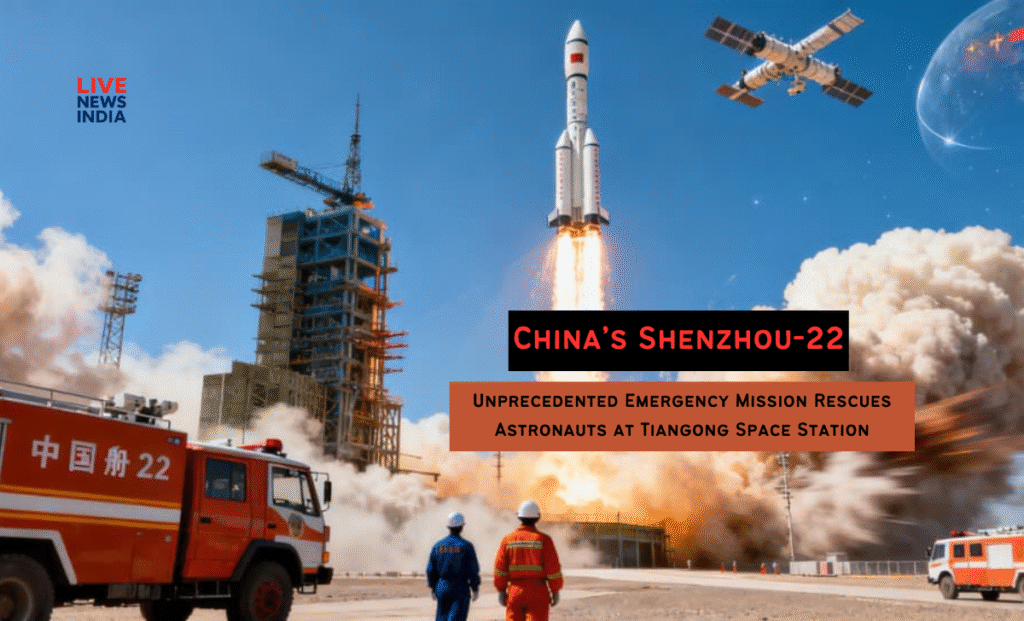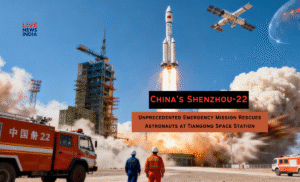China Shenzhou-22
China set a new milestone in space history by launching Shenzhou-22 as the nation’s first-ever emergency space rescue mission. Triggered by damage from space debris, the rapid deployment of Shenzhou-22 ensured the safety of astronauts on the Tiangong space station, showcasing robust contingency planning and technological readiness in the Chinese space program.

Why Was an Emergency Mission Needed?
The need for an emergency launch arose when China’s Shenzhou-20 spacecraft, docked at the Tiangong station, was struck by suspected orbital debris. Officials discovered cracks in the crew capsule’s window, making it unsafe for reentry[3]. This situation left the newly arrived Shenzhou-21 crew without a guaranteed escape option while regular crew rotations were halted. The incident highlighted the ever-growing risk of space debris for both Chinese and international missions.
China’s Shenzhou-22 Rapid Launch Preparation
Both Shenzhou-22 and its Long March-2F carrier rocket were already stationed at Jiuquan Satellite Launch Center for contingency, allowing the launch team to ready the mission in just 16 days rather than the usual 45. All involved agencies rapidly completed risk analysis, technical solution development, crew and material deployment, and coordinated emergency response efforts—a remarkable operational feat in the space sector.
Cargo and Objectives of China’s Shenzhou-22
While unmanned, Shenzhou-22 carried approximately 600 kg of supplies to support the crew—a cargo that included food, medical equipment, repair materials for the damaged Shenzhou-20 window, and additional safety gear. After its successful docking with the Tiangong station, Shenzhou-22 will remain available until 2026 as the designated return vessel for the current astronaut crew, effectively restoring full emergency evacuation capabilities for the station.
Broader Impact and What’s Next
The Shenzhou-22 mission highlights China’s “launch on need” strategy, intended to guarantee astronaut safety in emergencies. The seamless and rapid implementation of this rescue mission sets a precedent for addressing space debris threats—a growing challenge for all nations involved in orbital activities. The damaged Shenzhou-20 continues to serve as a backup and will undergo further analysis and research before returning to Earth for assessment.
Article End Here
Read International News Click Here







